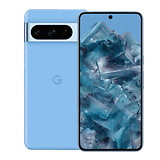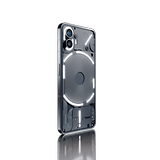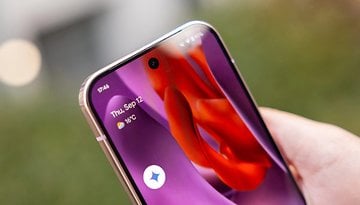Choosing the Right Samsung Foldable: A Comprehensive Comparison


Samsung pioneered the foldable smartphones market this century, with the Galaxy Z Fold and Galaxy Z Flip already in their fifth generation this year. In this article, we want to provide an overview of the available models and highlight the most important differences between the two series.
Yes, Samsung does have a talent for establishing and dominating smartphone categories. Remember the "phablet"? Samsung set the tone with the Galaxy Note series. When the Galaxy Fold (review) was unveiled in 2019, Samsung repeated the feat and ushered in the era of foldable smartphones. In 2020, the South Koreans presented the next foldable form factor with the Galaxy Z Flip (review) and have maintained their market leadership ever since.
- Also read: The best foldables to buy in 2024
We will look at the differences between the two series and tell you the advantages of each. First, let's take a look at the technical specifications:
Samsung Galaxy Z Fold and Galaxy Z Flip at a glance
You can purchase both the fourth and existing fifth-generation series from Samsung itself. For the sake of completeness, I have also included the Galaxy Z Fold 3 and Z Flip 3 in the table, as you can still find offers for these devices online. These two models from 2021 may be of interest to you, as they offer a more affordable entry into this expensive product category.

Galaxy Z Fold and Galaxy Z Flip most important differences
Form factor
Yes, thank you, Captain Obvious! Needless to say, the shape is very different from a regular handset. It does not take this article to figure that out. Of course, we need to talk about the differences in terms of usability. You open the Fold devices like a book, thereby enlarging a standard smartphone display area to that of a small tablet (7.6 inches).
With the Flip, you have the form factor of the classic clamshell cell phone that halves the current standard display size (6.7 inches) by folding it. While the Fold is all about having significantly more screen real estate during use, the Flip focuses on having significantly less space when transporting it. Measuring just 85.1 x 71.9 mm when closed, it fits comfortably in small trouser pockets.

When using the Flip, there are hardly any differences compared to a conventional smartphone. Okay, that is somewhat misleading. There are a few differences as illustrated by the photo above. When clipped to your jeans pocket, you can use the external display to control your playlist, as an example. The Galaxy Z Flip 3 is depicted above with its 1.9-inch external display having almost doubled in size with the Z Flip 5 to 3.4 inches.
The form factor is also extremely practical for capturing selfies or making video chats, as you can simply place the smartphone half-open on the table in front of you and have both hands free for the call or video.
Of course, in terms of functionality, the Fold offers the avid Samsung fan more, even if it only concerns multitasking. Thanks to the Flex mode that's available on Samsung's Foldables, you can watch a YouTube video in standard smartphone size on one half of the unfolded display, while having access to the video service's controls on the other half. However, the strange, almost square ratio is not really an advantage when watching full-screen videos.

The Fold also offers you S Pen compatibility, where drawing on the large display is more fun than on the smaller Note of yore. If you don't need the large form factor, you can fold the device and simply make use of the 6.2-inch external display. Logically, this is more functional than the 3.4-inch alternative that the Flip offers as an external display.
If you want to be more productive at work with a foldable phone and consume as much content as possible, the Fold should be your best bet. If, on the other hand, you are looking for a smartphone that is as compact as possible with a wow factor, the Flip is the more likely candidate. We have two more pictures for you to help get a grasp of their respective display sizes, so take a look:

The picture above clearly shows how compact Flip is when folded, and also how thick the devices are when we fold them. You can also see the significant size difference in the respective outer displays. You can view the dimensions of the inner display in the picture below. On the left lies the unfolded Z Fold 5, while the unfolded Z Flip 5 is next to it, with the Z Fold 5's cover display on the far right.

Technical specifications

Let's not spend too much time talking about displays in this section. You can find the specifications in the table above and even greater detail in the reviews. After all, the build quality of Samsung's panels is beyond reproach in the first place. We don't need to say much about processors, either.
Sure, they are important and often an important purchase criterion, but they are identical year after year since the Fold and Flip debuted (2021 Snapdragon 888, 2022 Snapdragon 8+ Gen 1, and 2023 Snapdragon 8 Gen 2).
When it comes to memory, things get more exciting: the Flip's RAM remained at a stable 8 GB, while the Fold offers 12 GB of RAM. Since the Z Fold 4, the series has also offered storage variants of up to 1 TB. The Flip, on the other hand, maxes out at 512 GB. It looks as though they want to position the Flip high up in the portfolio, but are really targeting the premium segment with the Fold.
- Related: The best Samsung smartphones
This is very evident when it comes to the cameras. The Flip falls behind the Galaxy Z Fold in this segment. With the Flip, you will have to make do without a telephoto camera, while the Z Fold 4 and 5 have a 10 MP camera with 3x optical zoom in addition to the 50 MP main camera and 12 MP ultra-wide angle camera.
The fact that the technically unimpressive 4 MP under-display camera for selfies is rather mediocre in terms of performance is not worth mentioning. When you have five camera alternatives, there is already a shooter for your first-person masterpieces.

Don't get me wrong: The dual camera configuration of the Galaxy Z Flip 5 offers above-average performance, especially the main camera. Thanks to the form factor, you can also use this primary camera for selfies. However, there is only digital zoom and the ultra-wide angle camera is not entirely impressive.
Generally speaking, the cameras haven't developed that much since the fourth generation. Would you like to dive deeper into camera technology and check what has changed in both models since last year? Then be sure to read our comparison articles as well as the reviews. To make it easier, I'll list them all here:
Do you want to find out about the software features, battery life, and build quality? Then the above links are specially for you!
Finally, it should be mentioned that you can enjoy identical software on both models. Android powers the device with the One UI skin running on top, while delivering a standard support of four years of Android updates and five years of security updates.
The main differences are the display size for both the internal and external displays, the camera capabilities, and the optional memory sizes. Do you want the large panel, like taking photos, and like to have plenty of storage space?
If you have answered in the affirmative, then you are most likely to settle for the Fold. If you care less about the camera because you only use it for a few vacation snapshots, then grab the Flip and enjoy a device that has the same powerful Snapdragon chipset, identical software support, and only lags a little behind in terms of RAM.
Price
The elephant in the room with foldable smartphones is still the price. Foldables are exceptionally expensive and this is, unfortunately, also the case with Samsung. The Fold series is priced significantly higher than the Flip series, as outlined in the table below, which shows what the devices originally cost and what they currently cost.

The MSRP is self-explanatory, but you will have to take a closer look at the current price. Some of the prices are very volatile and, at the time of publishing this article, not offered discounted. Hence, it's worth keeping an eye on the model you want for a little longer. You should also look out for the larger models even if you actually want to buy the smallest one because it is not uncommon for the larger model to be more affordable than its little sibling.
| Model | MSRP | Current price | |
|---|---|---|---|
| Samsung Galaxy Z Fold 5 |
|
|
|
| Samsung Galaxy Z Flip 5 |
|
|
|
| Samsung Galaxy Z Fold 4 |
|
|
|
| Samsung Galaxy Z Flip 4 |
|
|
|
| Samsung Galaxy Z Fold 3 |
|
|
|
| Samsung Galaxy Z Flip 3 |
|
|
|
It is worth visiting the Samsung store instead of the usual online suspects. There are always discounts and promotions that bring down the price, with you benefiting from a trade-in bonus thanks to a huge rebate for your old device as part of the trade-in program.
Do I buy Fold or Flip? This is the bottom line

You should now have a good idea of where the Fold comes into its own and what makes the Flip attractive. They are both eye-catching handsets, there's no beating around the bush about that. If you were to spend money on either device, you can be sure of receiving envious looks from others.
If you want to do it as cheaply as possible, you'll want to go for the Flip. For a lower price, you get the same processor, a decent camera, and an extremely compact foldable with the same display as a standard smartphone.
If you are up for investing more money, the better and more versatile camera configuration, and additional RAM capacity could justify choosing the Fold. The display size certainly also plays a role for Fold buyers.
Anyone who uses an S Pen, likes to do productive work with their Samsung phone, and can't get enough of multitasking features will be happy with the Fold.
Now it's entirely up to you: tell us in the comments whether you prefer the Flip or the Fold. Does Samsung appeal to you, or do you have your eye on a different foldable?


















